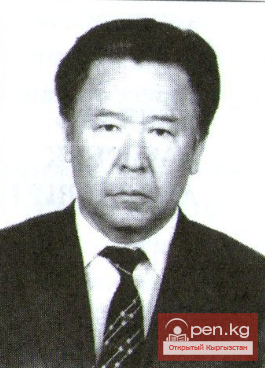
B. Jumabaev was a talented artist. His vibrant compositional gift allowed him to work with equal ease from life and from imagination. His drawings are compositional and imbued with a lively line that always clearly creates form both in its movement and in harmony with other forms. Even his early drawings from the 1960s bear the mark of talent — these are artistically drawn with line, unexpectedly fresh, and precise pencil and ink drawings ("At the Market," 1960, canvas; "Courtyard," 1960, canvas; "Self-Portrait," 1960, canvas; "At the Market," 1964, ink, pen). B. Jumabaev constantly drew rural genre scenes with figures of people and animals, yurts, mazars, carts, and household items, depicting friends and acquaintances — everything that his keen eye and rich visual memory could grasp. Dynamic, each time uniquely expressive, B. Jumabaev's drawings in book graphics are lively and amusing, as seen in the colorful illustrations for the children's book "A Bunch of Grapes" (1967), where "a gnarled bear in a dense forest," "in a light chapán and wide trousers," is vividly and cheerfully depicted, "crunching an apple after breaking a branch, while a fox, with prayer beads in its paw and an Asian knife at its waist, rushes off on its predatory business," or in a broad ethnic style, as in the illustrations for Kyrgyz tales ("Winged Horses" by S. Karapaev, 1965; "Gulgaaky" by O. Urmanbetov, 1968; "Portraits of Heroes and Beauties" by S. Karapaev, 1968). The uniquely characteristic drawing, combining the generalization of form with its fullness of life content, is distinctly evident in the often emphatically graphic pictorial compositions of B. Jumabaev.












































